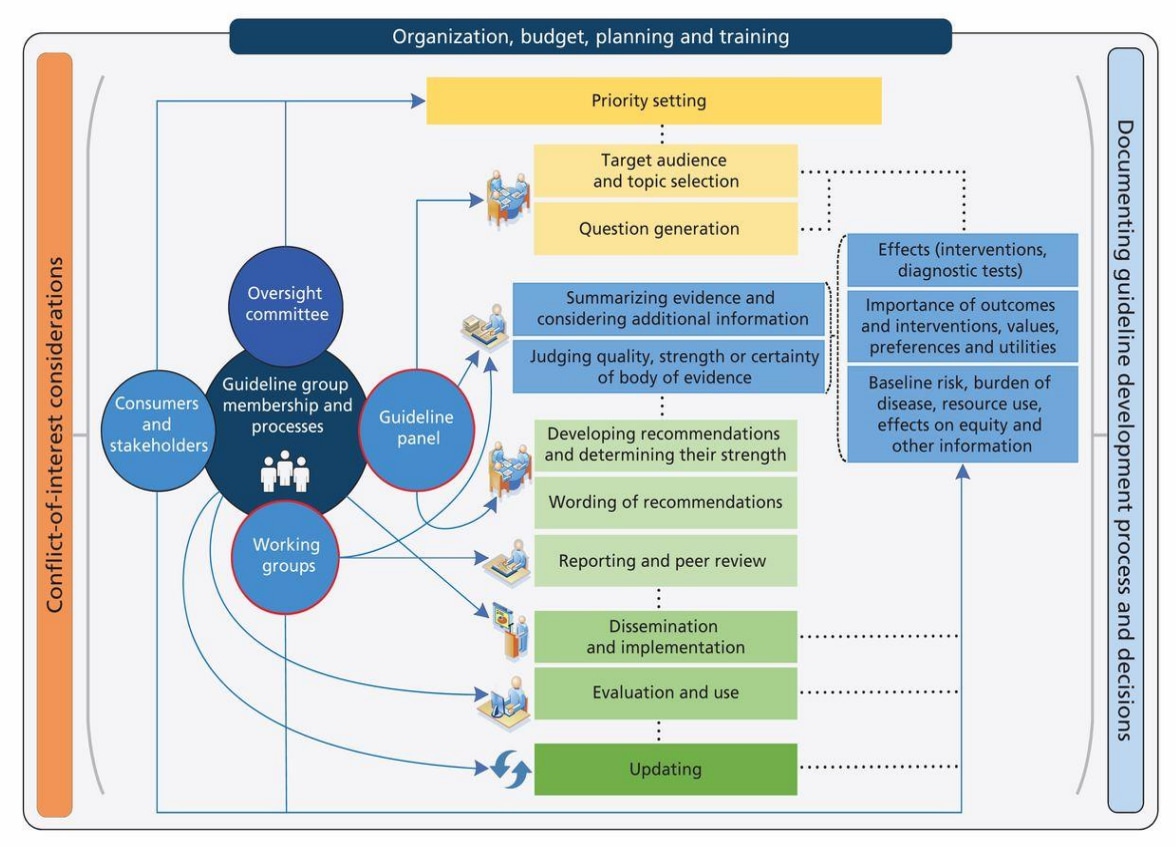About
- This ACIP GRADE handbook provides guidance to the ACIP workgroups on how to use the GRADE approach for assessing the certainty of evidence.
Summary
The typical guideline development process, including within ACIP, follows these steps:
- Form the guideline development or work group panel*
- Identify the scope of the guideline*
- Formulate the research question(s) (i.e., Population, Intervention, Comparator, Outcomes [PICO]) and identify critical and important outcomes for decision-making to guide the process
- Identify a high-quality published systematic review or conduct a systematic review de novo
- Quantitatively synthesize and narratively summarize the results for all critical and important outcomes
- Assess the body of evidence using GRADE and create GRADE evidence profiles
- Complete the evidence-to-recommendation (EtR) decision-making framework
- Formulate recommendations
*These steps may occur in tandem or in reverse
Figure 1. Diagram of the guideline development process
References in this figure:1

Figure 1 is not an ACIP-specific figure; the process may be individualized by organization.
- Schünemann HJ, Wiercioch W, Etxeandia I, et al. Guidelines 2.0: systematic development of a comprehensive checklist for a successful guideline enterprise. CMAJ. 2014/02/18/2014;186(3):E123-E142. doi:10.1503/cmaj.131237
